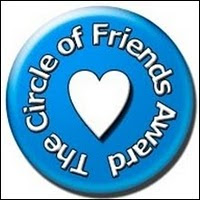It is not every day that a book is published that addresses the apathy of the Church of Jesus Christ. But the latest book on my list, ‘Zombie Church: Breathing LifeBack Into the Body of Christ’ does just that – by comparing today’s Christians to zombies from horror movies. The perfect book for the Halloween season, where the contrast between good and evil is prevalent in society at large.
Here is the synopsis of this book:
There Are Zombies Among Us. Liars. Hypocrites. Men, women, and children who attend church because it’s what they are supposed to do. Just going through the motions. These are the undead – people who are disconnected from the Spirit of God – who are spreading a virus of passivity, or worse. No one is completely immune.
Zombies can live. But they will have to fight. Fight for their lives.
In this challenging, culturally relevant book, Tyler Edwards spotlights the very real but often ignored lackluster attitude of today’s believers. An attitude that can infect an entire church. Using examples from popular zombie movies, Edwards will help you recognize the symptoms and show what you can do to awaken the undead. Your mission is to take life to a dying world by demonstrating what it means to “love the Lord your God with all your heart and with all your soul and with all your mind and with all your strength” (Mark 12:30 NIV).
The bride of Christ isn’t dead. But she is terribly sick. Zombie Church offers the keys to survival.
Here is the biography of the author:
Tyler Edwards is the lead minister of Cornerstone Christian Church in Joplin, Missouri. He graduated from Ozark Christian College in 2006 with dual degrees in Biblical Literature and Christian Ministries, and in 2007 married Erica, a journalism and broadcasting instructor at Pitt State University.
A speaker for retreats and men’s groups, Tyler taught a class on the life of Christ to local pastors in Mbale, Uganda. He works with Rapha House, a nonprofit organization that fights child slavery and works to help victims of sexual exploitation get the healing and help they need to live a free life. He was also on the board of directors for a video company that sought to create a global awareness of sex trafficking issues.
Tyler’s hope is to see the church regain an exclusively Christ-centered focus and learn to rise above its differences for the sake of the progression of the kingdom of God.
I love this reasoning in the Introduction explaining the use of zombie in this book:
Zombies do not produce anything. They do not accomplish anything. All they do is wander around aimlessly, consuming everything in their path (including non-zombies). They are a corrupt and destructive force that taints all they come in contact with. Zombies act like they are alive, but they are dead. They just don’t know it yet.
Yes, there are zombies in our churches. Not only that, but this seems to be a growing trend. The doors are open, the people show up faithfully, the songs are sung. But that’s it. So many American churches today are filled with people whose spiritual lives consist of little more than showing up to church on Sunday morning and, for the superspiritual, maybe once in the middle of the week. We have become experts at going through the motions, but these motions are all we go through. I can’t help but wonder if God didn’t have something more in mind for His church. It seems that something is missing. (pp. 13-14)
In the final chapter, entitled ‘Searching for the Cure,’ Pastor Edwards takes this important point about today’s church:
The church has focused its attention on a lot of things. It has jumped from rules to doctrines to causes and each time has come up short of the dynamic life-changing entity it was created to be. The biggest problem in the church is that we focus on lots of things that are not Jesus. There is only one Jesus and He should always be the focal point, the centerpiece, the gravitational center of life, the foundation of the church – which is good news for churches struggling with lifelessness, because getting back to life is as simple as making the focus of your life and everything you do Jesus. (pp. 208-209)
I found this book to be really interesting – not to mention extremely convicting. I am not necessarily a fan of the horror movie or book genre, but I am familiar enough with the concepts, having lived in the United States my entire life. It is hard not to have some familiarity with zombies and the comparable ilk. Although I do tend to avoid that genre of entertainment (due to the fact that it accentuates the demonic and the dark side of the spiritual battle we all are enduring on this earth), I was fascinated by the way in which Pastor Edwards uses it for the Glory of God. I certainly see elements of the zombie in my actions at times. ‘Zombie Church’ awakened me to my apathy, and for that, I am grateful!
You can order this book here.
This book was published by Kregel Publications and provided by the LitFuse Publicity Group. I am pleased to be part of the blog tour with these esteemed bloggers.





























.jpg)

